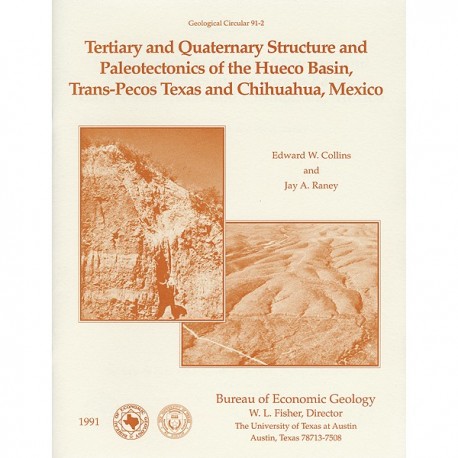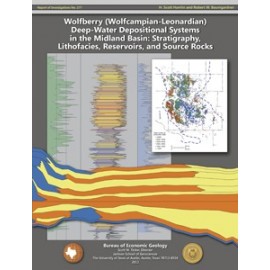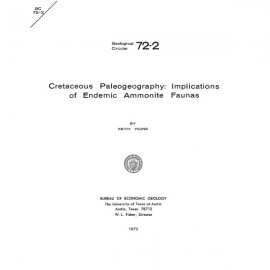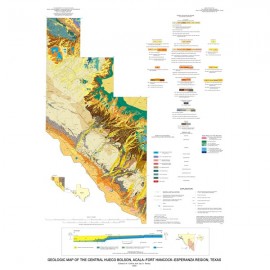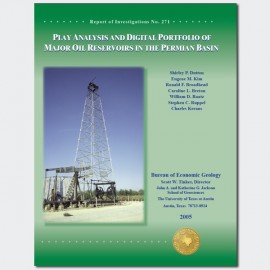Geological Circulars
-
Books & Reports
- Reports of Investigations
- Guidebooks
- Udden Series
- Geological Circulars
- Down To Earth
- Atlases of Major Oil and Gas Reservoirs
- Texas Memorial Museum Publications
- Environmental Geologic Atlas of the Texas Coastal Zone
- Mineral Resource Circulars
- Other Reports
- Seminars and Workshops
- Handbooks
- Submerged Lands of Texas
- Symposia
- Annual Reports
- Open File Reports
-
Maps & Cross Sections
- Thematic Maps
- Miscellaneous Maps, Charts & Sections
- Geologic Atlas of Texas
- STATEMAP Project Maps
- Geologic Quadrangle Maps
- Cross Sections
- Highway Geology Map
- Energy and Mineral Resource Maps
- Shoreline Change and Other Posters
- Wilcox Group, East Texas, Geological / Hydrological Folios
- Bouguer Gravity Atlas of Texas
- River Basin Regional Studies
- Featured Maps
- Posters
- Teachers & the Public
-
Geological Society Publications
- Gulf Coast Association of Geological Societies
- Alabama Geological Society
- Austin Geological Society
- Corpus Christi Geological Society
- Houston Geological Society
- Lafayette Geological Society
- Mississippi Geological Society
- New Orleans Geological Society
- South Texas Geological Society
- GCS SEPM Publications
- Historic BEG & UT Series
Tertiary and Quaternary Structure and Paleotectonics of the Hueco Basin, Trans-Pecos Texas and Chihuahua, Mexico
GC9102
For a downloadable, digital version: GC9102D.
GC9102. Tertiary and Quaternary Structure and Paleotectonics of the Hueco Basin, Trans-Pecos Texas and Chihuahua, Mexico, by E. W. Collins and J. A. Raney. 44 p., 17 figs., 1 appendix, 1991. ISSN: 0082-3309. Print.
To purchase this publication as a downloadable PDF, please order GC9102D.
ABSTRACT
The Hueco Basin of Trans-Pecos Texas, which formed in response to Cenozoic extensional tectonism, lies within the southern Rio Grande rift near the poorly defined boundary between the rift and the southern Basin and Range province. Subsurface data, including proprietary seismic lines, were studied in conjunction with aerial-photo and surface geologic mapping to determine the basin's structure and fault history. These data were also studied to evaluate the seismic risk of the basin and to consider it as a possible repository of low-level radioactive waste. The northwest-trending Hueco Basin is composed of a northwest subbasin that has north-striking normal faults and a southeast subbasin that has northwest-striking normal faults. Studies revealed that Cenozoic basin fill is thin (less than 150 to 200 m) on the east and northeast basin margins and is thick (as much as 2,850 m) in the central basin and on the west and southwest basin margins where major normal faults bound a graben that is 15 to 25 km wide. Major faults bounding the graben on the west and southwest have been more active and exhibit greater offset than do boundary faults on the east. This disparity in displacement between the graben margins has resulted in an asymmetric graben. Isopach maps of lower and upper basin-fill sequences, differentiated from seismic data, indicate that much of the southeast Hueco Basin subsided more than the northwest Hueco Basin during deposition of the lower basin fill. Thicker upper basin fill within the northwest basin indicates that the basin subsided more in the northwest than in the southeast during deposition of the upper basin fill.
The two major faults that bound the Hueco graben on the west and southwest, the East Franklin Mountains fault and Amargosa fault, respectively, have had the most recent (late Pleistocene–Holocene) surface ruptures. Scarp-slope angles of these faults are commonly steeper than 20°, and middle Pleistocene surficial deposits that contain indurated calcic soils having Stage IV to V morphology are offset between 24 and 32 m. The maximum throw on these faults during single surface-rupture events has been between 1.6 and 3 m. Major faults bounding the southeast Hueco graben on the northeast (Campo Grande, Caballo, and unnamed faults) had their most recent surface ruptures during the late Pleistocene. Scarp-slope angles of these faults are rarely as much as 15° and more commonly between 4° and 7°. Middle Pleistocene surficial deposits that contain indurated calcic soils having a Stage IV to V morphology are offset between 1.6 and 24 m. Maximum vertical offset on these faults during single surface-rupture events has been between 0.6 and 2 m. These data will be useful in assessing the seismic risk of a site in the Hueco Basin being considered as a possible repository of low-level radioactive waste.
Keywords: faults, Hueco Basin, neotectonics, tectonics, Trans-Pecos Texas
Citation
Collins, E. W., and Raney, J. A., 1991, Tertiary and Quaternary structure and paleotectonics of the Hueco Basin, Trans-Pecos Texas and Chihuahua, Mexico: The University of Texas at Austin, Bureau of Economic Geology, Geological Circular 91-2, 44 p.
